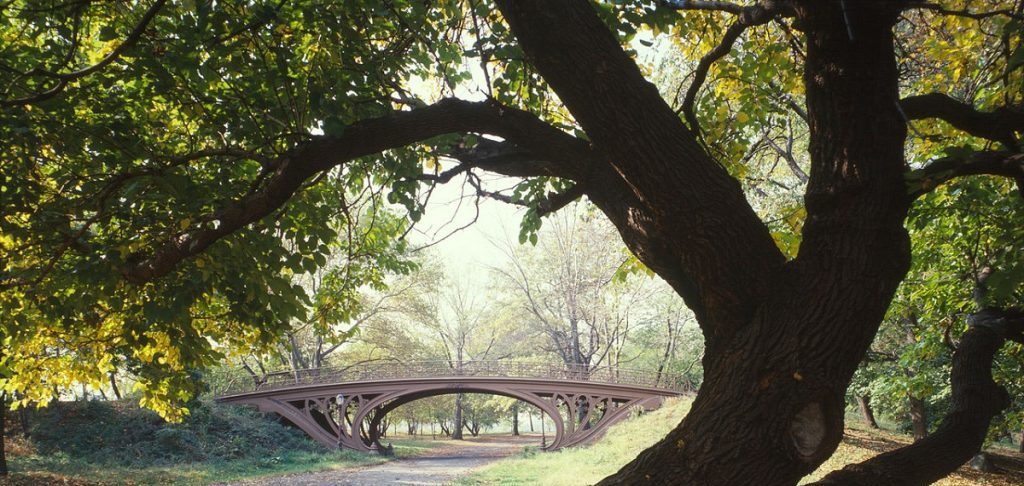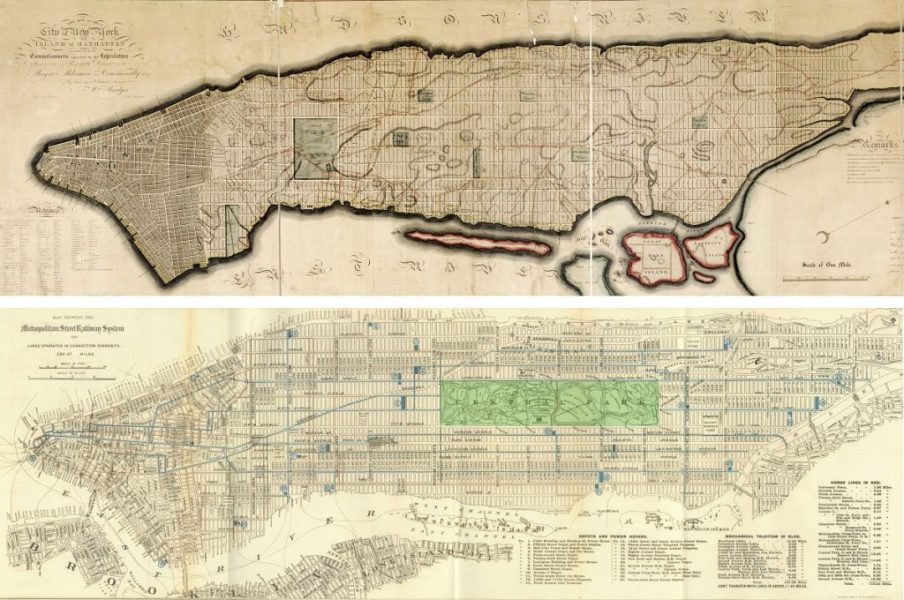13 August 2018
for Madrid Nuevo Norte


Today, we consider public parks as something natural and inherent to the urban environment, but this was not always the case. There was a time when living in a big city meant, for many of its inhabitants, not being able to access a wooded or green area.
Green spaces have existed in cities since ancient times, primarily as private gardens in palaces and palatial homes, as a symbol of power and status. The first steps taken to bring the landscaped areas closer to the citizens consisted of opening these extensive palace gardens to the public. All the inhabitants of Madrid could go to the Buen Retiro Park for recreational use since the mid-18th century; an initiative supported by the enlightened King Charles III. However, these were isolated cases, and many cities continued to lack green spaces for public recreation.
The Industrial Revolution and mass movements of the population towards urban areas meant that millions of people, in many cities, did not have access to nature, or to a quiet haven in an often polluted, agitated and grey environment.
By the mid-nineteenth century, the Industrial Revolution had thoroughly permeated the large cities of Europe and North America, and the living conditions of large swathes of the population, who had migrated from rural areas to the metropolis to work in the factories, were very poor. The vast majority of the inhabitants of these growing cities did not have access to natural areas. Some cities in the United States even had purpose-built private gardens publicly available for a fee for people who wished to enjoy a green, landscaped and peaceful space for a few hours. However, few citizens could afford it.
A school of thought known as “social hygiene” appeared against this backdrop. Hygienists publicly denounced the situation that was further aggravated over the years. To address this situation, they sparked a public debate on the living conditions and health of the population and tried to launch wide-ranging initiatives in urban areas. The first, modern, public parks were created in the United Kingdom in the mid-nineteenth century to provide an environment that would mitigate these shortcomings for the vast majority of people, and help improve their physical and mental health.
Critics of this new urban element argued, for instance, that people were not prepared to appreciate and care for something as precious and delicate as flowerbeds or fragile shrines, the new parks would be destroyed and vandalised in a few days. However, the first experiences proved them wrong: citizens valued and respected these new elements as a common heritage, and cases of vandalism were rare.
Birkenhead Park in Liverpool is considered the first park expressly built for public use. The architect Joseph Paxton created it in 1847. This trend would spread very soon to cities like Paris and New York. In Paris, Napoleon III ordered the opening and renovation of the Royal Gardens, including Bois de Boulogne and Bois de Vincennes, at opposite ends of the city. He also created several small, new parks within the capital: Parc Monceau, Buttes-Chaumont and Montsouris.

New York and its emblematic Central Park was a unique case, given the intense public debate that preceded its creation. The island of Manhattan had been wholly divided into sellable lots to enhance their sale. The so-called Commissioners Plan of 1811 created a gridiron that covered the entire island and left some free space for a few public squares and open spaces scattered across the island. However, in practice, the pressure from real estate development was such that very few squares were built in this emerging metropolis, and most were used as building plots.
In 1844, the poet, journalist and editor William Cullen Bryant published an article in the Evening Post, urging the immediate creation of “an extensive pleasure ground of shade and recreation” in the city, which sparked an intense public debate about a hypothetical central park.

In 1851, the newspaper Journal of Commerce published the correspondence between two municipal officers, which discussed the idea of creating a large park, “The Park”, that would cover most of the central section of the island, sacrificing real estate development to create a “public lung” open to all citizens. The public discussion lasted three more years, and the conflicting views were publicly aired in real-time in the New York press. Ultimately, Central Park was created in 1857.
Following these initial debates in Europe and America, public parks gained widespread acceptance by city governors, not least because of their undeniable success and popularity. Their existence is now regulated and required worldwide by municipal ordinances. Nowadays, it is considered an essential element of modern cities.